- News
- Reviews
- Bikes
- Accessories
- Accessories - misc
- Computer mounts
- Bags
- Bar ends
- Bike bags & cases
- Bottle cages
- Bottles
- Cameras
- Car racks
- Child seats
- Computers
- Glasses
- GPS units
- Helmets
- Lights - front
- Lights - rear
- Lights - sets
- Locks
- Mirrors
- Mudguards
- Racks
- Pumps & CO2 inflators
- Puncture kits
- Reflectives
- Smart watches
- Stands and racks
- Trailers
- Clothing
- Components
- Bar tape & grips
- Bottom brackets
- Brake & gear cables
- Brake & STI levers
- Brake pads & spares
- Brakes
- Cassettes & freewheels
- Chains
- Chainsets & chainrings
- Derailleurs - front
- Derailleurs - rear
- Forks
- Gear levers & shifters
- Groupsets
- Handlebars & extensions
- Headsets
- Hubs
- Inner tubes
- Pedals
- Quick releases & skewers
- Saddles
- Seatposts
- Stems
- Wheels
- Tyres
- Health, fitness and nutrition
- Tools and workshop
- Miscellaneous
- Cross country mountain bikes
- Tubeless valves
- Buyers Guides
- Features
- Forum
- Recommends
- Podcast
review
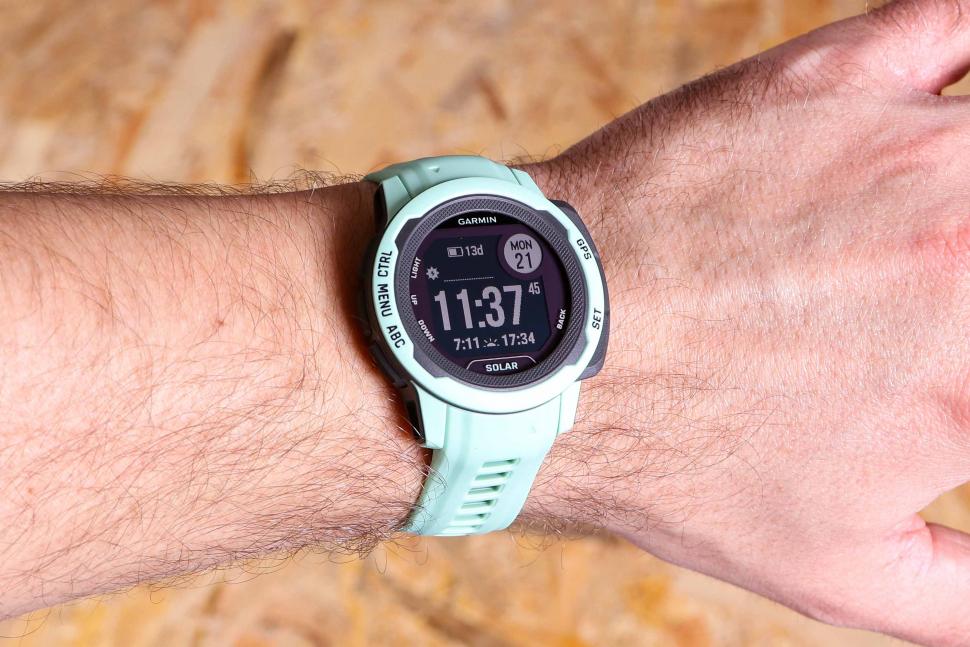 Garmin Instinct 2S Solar
Garmin Instinct 2S Solar£389.99
VERDICT:
Tough and highly customisable solar-charging sports watch with impressive battery and wide-ranging support
Impressive battery life thanks to solar charging
Plenty of customisation
Power meter support
Only breadcrumb trail for following maps
Cable is proprietary
Some might find it's too bulky for sleep tracking
Weight:
43g
Contact:
At road.cc every product is thoroughly tested for as long as it takes to get a proper insight into how well it works. Our reviewers are experienced cyclists that we trust to be objective. While we strive to ensure that opinions expressed are backed up by facts, reviews are by their nature an informed opinion, not a definitive verdict. We don't intentionally try to break anything (except locks) but we do try to look for weak points in any design. The overall score is not just an average of the other scores: it reflects both a product's function and value – with value determined by how a product compares with items of similar spec, quality, and price.
What the road.cc scores meanGood scores are more common than bad, because fortunately good products are more common than bad.
- Exceptional
- Excellent
- Very Good
- Good
- Quite good
- Average
- Not so good
- Poor
- Bad
- Appalling
The Garmin Instinct 2S is a hardy multisport GPS smartwatch that has an amazing range of activity-specific profiles.
Although the Instinct 2 keeps its tough and rugged design for practicality, in this incarnation it's no longer just focused on outdoorsy use. It also boasts a whole host of features that cover day to day health and wellbeing monitoring, with useful sleep tracking feedback, as well as performance training needs with power meter connectivity, and accommodating multi-day adventuring far from home thanks to the impressive battery life.
The maps are just a breadcrumb trail, so it's not one for effortless navigational support, but there are useful features for following a route to get back if really needed.
The version I have on test comes with Garmin's solar charging lens for boosting the battery life. But that 'S' doesn't stand for solar, that's actually to indicate that this one has the smaller case size. The diameter of the watch housing is 40mm on the model I have on test, whereas the other model has a 45mm diameter. Despite being the smaller size, the black and white screen is easy enough to read while on the go.
This watch doesn't just look rugged, it's waterproof-rated to 100 metres, as well as being thermally and shock resistant – it's designed to cover your adventure needs.
To tailor the watch to meet your specific day to day needs, Garmin offers the ability to download custom faces. Alongside the personalised watch faces, there's also loads of what Garmin calls 'widget glances' such as weather, sunrise/sunset, notifications, calendar and much more – you've got plenty of scope for adding what you need here and reordering it too.
Activities
The Garmin Instinct 2S is very versatile in terms of the range of activities it can track. As well as using it to record cycling, running or hiking, you can select bouldering, kayaking, backcountry skiing and much more.
It also has specific profiles for each of the different cycling disciplines: choose between road, gravel, commuting, indoor, cyclocross, bike touring, triathlon, mountain biking, e-biking and e-mountain biking, and you can customise each with the data fields you need.
You can select from the entire list at any time, or you can add favourites to the top of the list for quick access.
With all of these specific profiles, you can really customise the watch so you have the metrics you need on each of the data pages.
It works well for recording rides and you don't need to also wear a chest strap as the watch has an optical heart rate monitor built in. But as the watch does also have ANT+ and Bluetooth connectivity you could also track heart rate via a chest strap.
As well as the ability to add structured workouts to the watch for you to follow, if you're unsure of what session to do then the Instinct 2 also has you covered. It offers you a Daily Suggested workout which it recommends based on your training load and training status, and it'll give you ones specific to cycling and running.
Then, post-workout, Garmin gives you a recovery time which it explains takes into account the training intensity of the session you just completed as well as other factors such as stress, daily activity and sleep.
Health and wellness features
As I said above, the Instinct 2 has a wrist-based optical heart rate monitor and comes with an impressive amount of everyday health monitoring features.
Sleep is tracked each night and you'll be given a sleep score as well as a breakdown of your light, deep and REM sleep stages. On the Connect app, as well as providing you with information on the amount of time you spent in each phase, Garmin also says 'fair', 'good' and 'excellent', so you can quickly understand how you're doing, and depicts where you sit on an 'optimal range'.
Tips on how to get better sleep in each of the stages are also provided on the Connect app – it's really helpful having something to act on rather than just getting the raw figures.
While these explanations are helpful, Garmin doesn't track naps and there's no smart waking system that'll begin an alarm when you're in a lighter sleep phase.
With the new smaller 40mm 'S' size available, it is a more practical option for wearing at night and this provides you with the 24-hour health tracking that really gets the most out of the watch's features and analytics that Garmin provides. That's not to say it's unnoticeable on your wrist. There was certainly a breaking-in period where I had to get used to it and I found it worked better to swap the watch over at night to give my day-side wrist a break.
So, even with this smaller size, don't expect it to be the most comfortable sleeping companion, but considering all that the watch can give you during the day it's quite a good balance.
(Yet) another feature is Garmin's Body Battery tool, which tracks factors including heart rate, sleep and activity to tell you how much energy you have for the day ahead. The higher the number (out of 100), the more energy you should have to complete activities. It is updated as you go about your day and it works very well as an easy-to-glance-at gauge of how you're doing, which does help you realise that you need to adjust your approach if you can see you are drained, as indicated by a lower number.
Plus, you've got heart rate variability, which is used to give you a stress level score, and then there's a Pulse Ox sensor that uses light beams to estimate how well your body is absorbing oxygen.
Sensors
The Instinct 2 series supports Bluetooth and ANT+ heart rate broadcasting, and so can be connected up to Zwift, for example, to use for linking up your heart rate to a workout that you're potentially following on the platform.
> 12 reasons why you should buy, and use, a power meter
The Instinct 2 can also now be paired with power meters. If you're using Garmin's Rally pedals with Cycling Dynamics – which provides advanced data on left/right balance, power phase (which part of the pedal rotation you're putting the power in), platform centre offset (whether you're pressing more on one side of the pedal platform), as well as seated and standing time – you won't be able to view that in real time but you can analyse this afterwards.
Navigation
Multiple global navigation satellite systems (GPS, GLONASS and Galileo) are used for accurately keeping track of your location, and the Instinct 2 has ABC sensors, including an altimeter for elevation data, barometer to monitor weather, and three-axis electronic compass for navigation.
The Instinct 2 doesn't have maps, so if you were to click through 'navigate' to 'courses' you'd just be following a breadcrumb trail of a route; it's something, but obviously not the easiest to follow, especially while pushing the pace.
There are a lot of different ways of getting a route onto the device: you can import a GPX or TCX file directly onto the device or via Garmin Connect; you can automatically sync routes from another route-making platform (such as Strava or Komoot); create a custom or automatic route on Garmin Connect; or follow the route of a previous activity you completed on the watch.
> GPS cycle route planning made easy – how to plan and follow a bike route
As well as choosing to do the route in reverse, directly on the Instinct 2, you can view the map and the elevation profile. Unlike the Garmin Fenix smartwatch (which Mike reviewed last year), though, the Instinct 2 doesn't include Garmin's ClimbPro feature which helpfully breaks down the details of ascents so it's easier to judge your pace.
In those situations when you need to head back, there are two different quick ways of navigating back to where you started. You've got 'Straight Line' which is a direct route back to the start, and TracBack which takes you back to your starting point by retracing your route. Sometimes it's better to go back the way you came as you can be sure of what to expect, but other times you might have taken quite a circuitous path, so a direct option back could be more what you're looking for. It's great that both of these options are included, as I do think there are different situations in which you'd prefer one over the other.
If you don't have a route and just need to get to a location but you do have the coordinates, you can enter those into the watch and then follow the arrow which will be routing you directly to get to the location.
The Instinct 2's mapping will certainly help you if you get a little bit stuck and you just need to know the general direction, especially if you need to get back to where you started. I found it's more helpful at the slower speeds of running, particularly on a longer trail run. If I wanted to follow a new route on a bike ride I'd much rather have a cycle computer on my bars, rather than glancing at my wrist and taking my eyes off the road. If the maps were clearer you'd get away with this more, but as it is, I wouldn't use the Instinct 2 for these purposes at all.
Notifications on the go
The Instinct 2 will show you incoming notifications to keep you alerted and informed, as long as you have your smartphone in Bluetooth range, that is.
The watch doesn't have a microphone, so it's not actually possible to answer calls directly, but you can accept the call on the watch and then speak on your actual phone. It's also possible to decline the call or send a pre-written suggested text message such as 'sorry, can't talk now' or 'on my way!', which is quite handy. You can have three messages ready to go on the watch, and you can edit which three on the Garmin Connect app.
As well as responding to incoming calls, you can also reply to messages, and, again on the Garmin Connect app, you can choose and order which pre-written messages you have access to send; these aren't limited to three so you have lots more scope. Plus, you have 140 characters to play with, which is plenty.
Contactless payments
The Instinct 2 supports Garmin Pay for making contactless payments, which would be a really convenient feature. I was hoping to test this, but my bank, Nationwide, does not currently support Garmin Pay. I assume Garmin will be continuing to add all the major banks where possible, but just be warned your current bank may not participating at this time.
Santander is really the only one in the list that stands out as being a common bank, so I don't really see the feature being useful for many right now. You can find the full list here to be sure.
Battery life
Battery life is incredibly impressive on the Instinct 2. The solar version I have on test uses Garmin's Power Glass to extend the battery life, and with this solar charging capability Garmin says it gives you the potential for unlimited battery life in battery saver mode and up to 51 days in smartwatch mode with 24/7 wrist-based heart rate monitoring. Garmin reckons you'll get this with three hours per day in 50,000 lux conditions, which is a not so sunny overcast day.
Plus, in the power manager, Garmin gives you the ability to adjust the settings to extend the battery life further. If you need more battery time, you can switch GPS modes, disconnect your phone and/or turn off the wrist-based heart rate monitoring.
In terms of its solar performance, you can keep an eye on how much solar power your watch is obtaining in one of the default watch faces or you can have solar intensity set as one of your 'glances', and this will show you a timeline of the last six hours. The taller the bar line, the brighter and more intense the sunlight. On the Garmin Connect app you can also view all of your solar charging history.
While it is interesting to see when you've been solar charging the watch, it could be more useful to have a notification at the end of the day saying 'you've collected x amount of solar intensity today' or, even better, 'you've added x amount to your battery life', to help you understand how the solar charging is really extending your battery life.
Value and conclusion
At £389.99 it's a similar price to Garmin's Venu 2 Plus that we reviewed earlier in the year. With a microphone built in, the £399.99 Venu 2 is better set up for day-to-day living rather than sports.
Wahoo's Elmnt Rival Multisport GPS watch is now £299.99 (£50 less than when Mat tested it last year), and it offers plenty of sport-specific features – Touchless Transition is particularly useful for triathletes – but the Instinct 2 will cover you for a lot more day-to-day wellbeing monitoring as well as other activities.
Overall, the Instinct 2S is a tough sports watch that will cover your needs if you are an adventurous sort who loves being outdoors (as it'll charge while you are out in the sun!) – as long as you don't tend to rely on maps for adventuring, unless you're prepared for a more wild experience, as you roughly follow a breadcrumb trail.
> Read more road.cc reviews of smartwatches here
There's so much on offer with this watch, so it's really handy that it's easy to customise these features so you have easy and quick access to the ones you need.
Garmin's Body Battery is useful, as are its sleep insights, and it can even be used for more advanced performance needs as you can hook up power meter pedals and Cycling Dynamics for post-ride analysis.
Verdict
Tough and highly customisable solar-charging sports watch with impressive battery and wide-ranging support
road.cc test report
Make and model: Garmin Instinct 2S Solar Rugged GPS Smartwatch
Size tested: n/a
Tell us what the product is for and who it's aimed at. What do the manufacturers say about it? How does that compare to your own feelings about it?
Garmin says: "This rugged, solar charging GPS smartwatch is tough enough to keep up with you and unique enough to fit your style. Now it comes in two sizes to fit every wrist.
Keep your experiences going with up to 51 days of battery life in smartwatch mode with solar charging.
Train your way with built-in sports apps at the wrist.
Smart notifications so you don't miss out on what matters.
Push boundaries, but stay on track with access to more satellites.
Understand your body better with 24/7 health monitoring."
Tell us some more about the technical aspects of the product?
Garmin lists:
Multi-GNSS Support
ABC Sensors
TracBack Routing
Smart Notifications
Connect IQ Store
Garmin Pay Contactless Payments
Safety and tracking features
Calendar view
Sync with the Garmin Connect app
Built-in sports apps
HIIT Workouts
VO2 Max
Daily workout suggestions
Recovery time
MTB Dynamics
Wrist-based heart rate
Stress Tracking
Sleep Score and Advanced Sleep Monitoring
Body Battery Energy Monitoring
Pulse Ox
Fitness Age
Intensity Minutes
Women's Health Tracking
Rate the product for quality of construction:
9/10
Rate the product for performance:
8/10
Rate the product for durability:
9/10
Rate the product for weight (if applicable)
7/10
Rate the product for comfort (if applicable)
7/10
Rate the product for value:
5/10
Tell us how the product performed overall when used for its designed purpose
Great for recording a wide mix of activities and for staying on track with your fitness and recovery thanks to Garmin's sleep tracking and Body Battery features. A little harder to use for navigating but useful enough for helping you get back to where you started.
Tell us what you particularly liked about the product
The mix between health and wellbeing monitoring and training support.
Tell us what you particularly disliked about the product
Only a breadcrumb trail for following maps.
How does the price compare to that of similar products in the market, including ones recently tested on road.cc?
Although the price is high, the Instinct 2 gives you a lot of features for the money – both general day-to-day ones and for performance needs too. Garmin's Venu 2 Plus is £399.99 and is better set up for day-to-day living rather than sports, while Wahoo's Elmnt Rival Multisport GPS watch is more sport-specific and is now £299.99.
Did you enjoy using the product? Yes
Would you consider buying the product? Yes
Would you recommend the product to a friend? Yes
Use this box to explain your overall score
The Instinct 2S is a very well-rounded smartwatch which has a useful mix of features, from 24/7 health monitoring to those for top performance needs, including being able to hook up a power meter, for example. The solar charging capability is also impressive, but there's no doubt that it's a lot of money to be spending without getting proper maps.
About the tester
Age: 24
I usually ride: Road bike My best bike is:
I've been riding for: 10-20 years I ride: Every day I would class myself as: Expert
I regularly do the following types of riding: road racing, cyclo cross, commuting, touring, club rides, sportives, general fitness riding, Gravel riding, indoor turbo and rollers, track
Anna has been hooked on bikes ever since her youthful beginnings at Hillingdon Cycle Circuit. As an avid road and track racer, she reached the heady heights of a ProCyclingStats profile before leaving for university. Having now completed an MA in Multimedia Journalism, she’s hoping to add some (more successful) results. Although her greatest wish is for the broader acceptance of wearing funky cycling socks over the top of leg warmers.
Latest Comments
- brooksby 2 sec ago
Maybe, but only because that's what the Highway Code says to do… ...
- Rendel Harris 7 min 44 sec ago
I too am one of those old folks and I remember it well (though it was gangrene rather than the actual crash directly that almost took his leg, as I...
- Rendel Harris 23 min 55 sec ago
As he says, sexual abuse as a child can rear its appalling head at any time in your life and drive you into a tailspin of depression, poor...
- SimoninSpalding 42 min 21 sec ago
I have a Ragley Trig, which is steel, has masses of clearance plus everything needed for racks, mudguards. I have it set up with a 2x10 Campag...
- thrawed 47 min 36 sec ago
Damn they messed up with this one, services like that grow from word of mouth. Who is going to be recommending komoot now when you need a...
- wtjs 1 hour 49 min ago
Excellent, just the job! Thanks
- Rendel Harris 3 hours 10 min ago
Good point, it's England and Wales. Northern Ireland seem to have the same minimum and maximum penalties but I don't know if they work with the...
- David9694 3 hours 26 min ago
Our car-dominated urban environment is repressive and hot - let's see if we can desecrate the countryside ...
- chrisonabike 3 hours 54 min ago
Are you confusing a clearly opinionated - nay, biased rag like road.cc with a balanced, respectable news organisation like the BBC?
- Bigtwin 5 hours 10 min ago
"Welcome to your local Council - you don't have to be a moron to work here, but it really helps if you want to blend in".
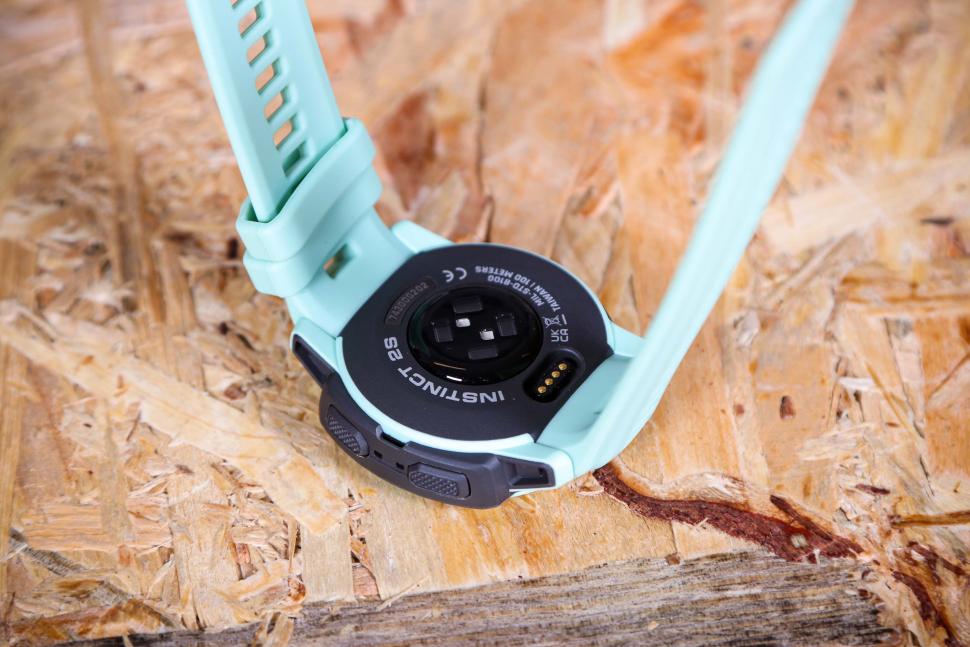
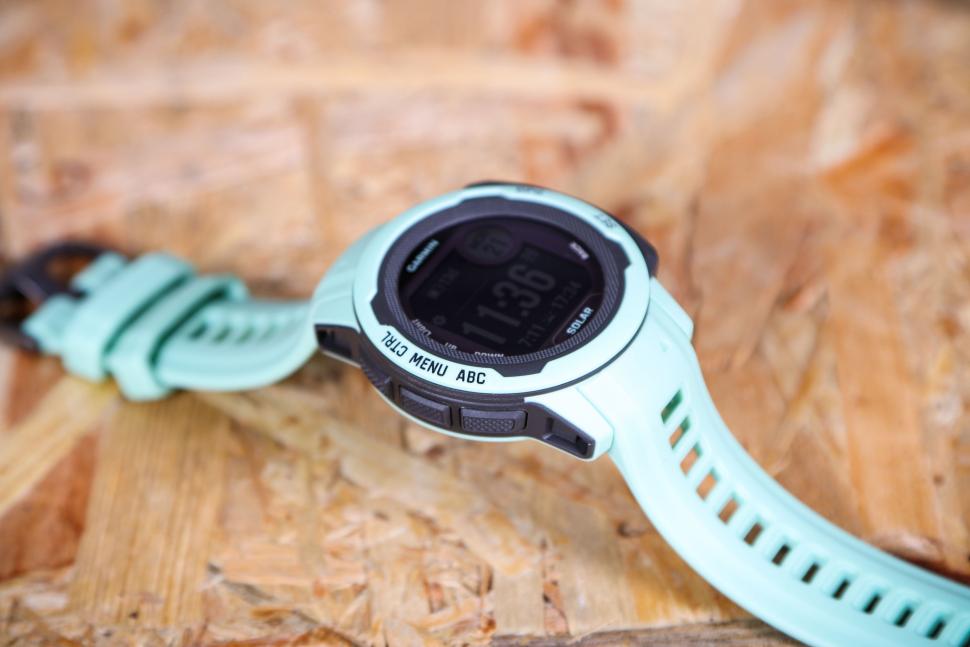
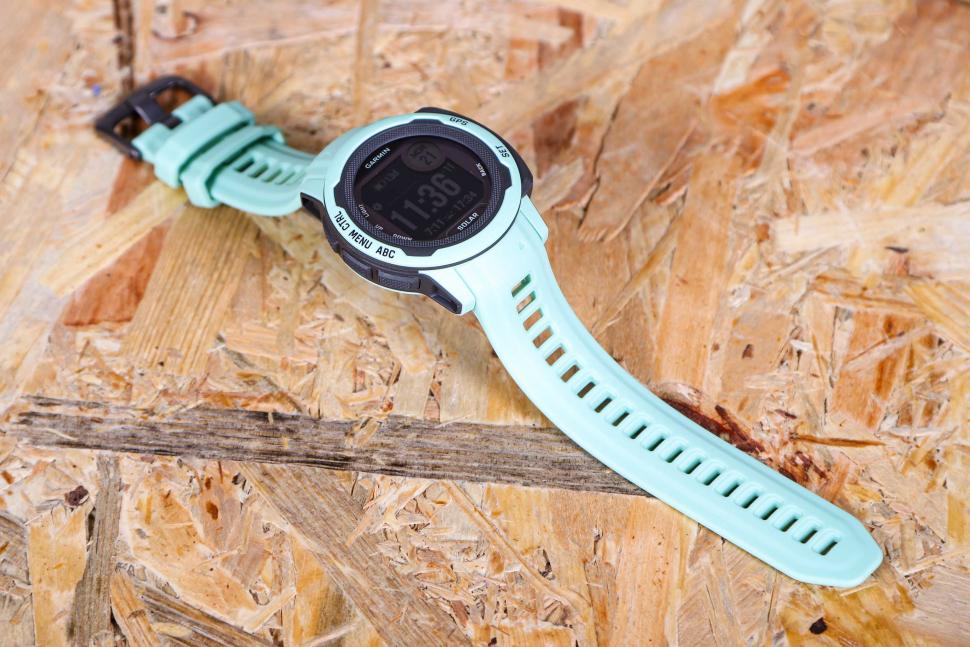
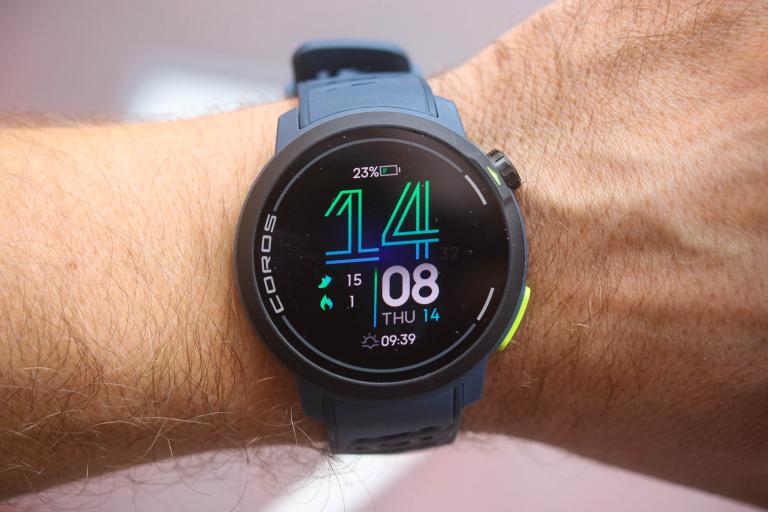
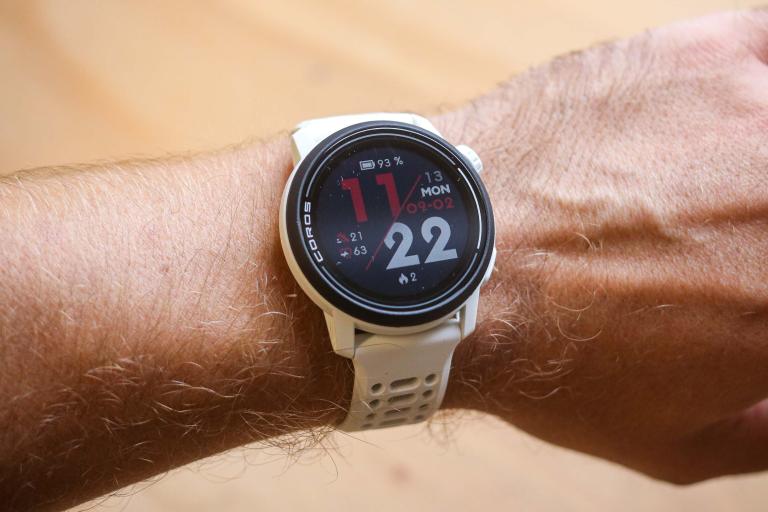
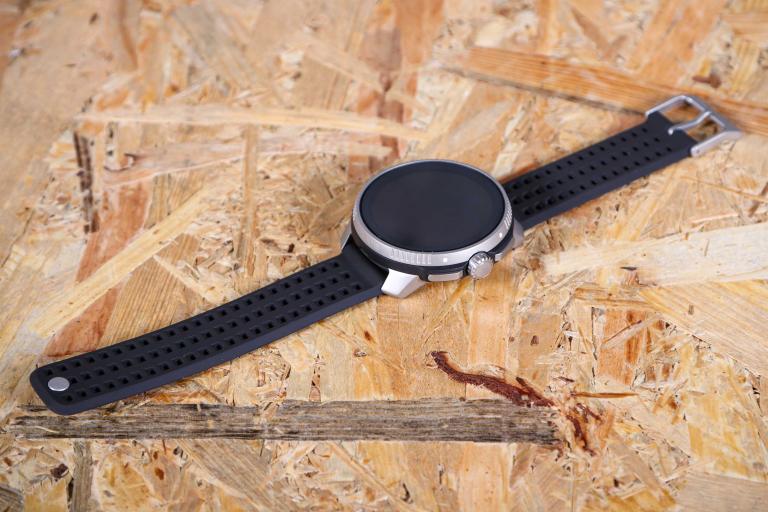
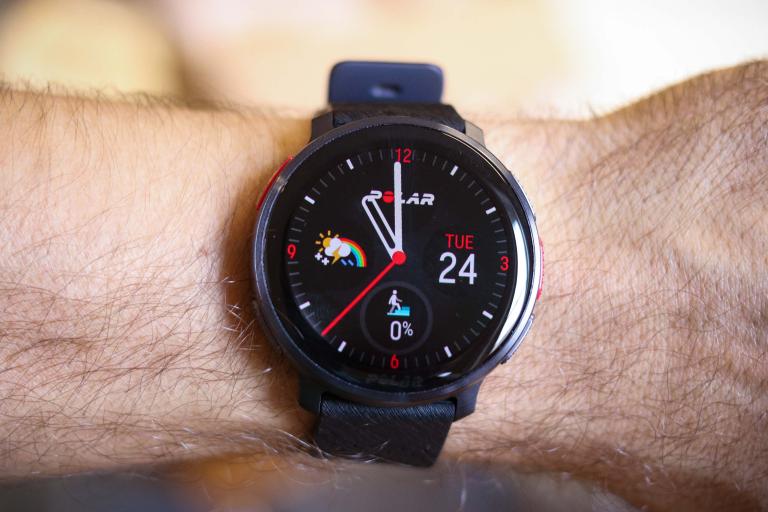
Add new comment
5 comments
Not mentioning the screen seems a bit of omission. Looks like its B&W or Grayscale only? Thats a pretty tough ask to swallow in a £400 watch.
Yeah, the Garmin website says it's monochrome. Not too keen on the styling to be honest. Looks like a clone of a Casio G-Shock.
It is mentioned, albeit only briefly and the reviewer didn't have a problem with the lack of colour: "Despite being the smaller size, the black and white screen is easy enough to read while on the go."
I would say the importance of colour depends on what is being displayed and adding colour for the sake if it isn't always useful. It's useful for e.g. maps where colours can help distinguish between roads/rivers/fences etc. but this watch doesn't have maps. For just showing text and numbers, I don't see that colour adds much.
I tend to agree it doesn't add much, but given pretty much every smartwatch from £50 up now comes with it I think there's an argument to say it's table stakes.
what's the point of a £400 watch that looks like it was bought in a filling station?
It's irritating that Garmin use their own plug design for their watches, but it's hard to see what else they could do. I have a Forerunner 45 and I don't know where you'd put a micro-USB or USB-C socket without adding bulk.
On the upside, the socket is the same across loads of Garmin watches, so third-party suppliers have stepped in with cables that don't cost silly money.
Here's a two-for-£8 deal.
Here's a cradle.
And here's a cradle with stand.